
‘After I finished IS IT REALLY SO STRANGE? in 2004, it became difficult for me to make another long film. I was left with the question of how to continue a body of work under adverse circumstances, since the conditions of funding and the technological possibilities for independent filmmaking have changed radically over the past twenty years. Experimental filmmakers of previous generations have found ways to cope, ensconcing themselves in academia or becoming technical fetishists—repairing cameras and going on eBay to find 16-mm projector parts. That is not my situation. I thought it was more important to do things that were in keeping with my interests rather than rigidly adhering to an arbitrary form like the feature-length film.
‘I began to adopt a practice more like that of an artist than that of a filmmaker. An independent filmmaker puts everything into a project that can take years to realize. Every thought, every feeling, every bit of money goes into one movie, and if that movie is a flop (as it often is), financial and emotional devastation follow. It is a very difficult way to live one’s life. My first two films each took approximately six years to make, and I was lucky. The films were screened, they were released on video, and I was able to make more of them, but I got tired of the protracted struggles. I have come to prefer the way many painters work, making several pieces at once, switching from one to another, and ultimately producing a number of discrete works.
‘Becoming more prolific and being less attached to any one work has been liberating. If someone doesn’t like a particular movie of mine, it doesn’t matter much; there are plenty of others to see. For me, it is most important to continue making work and to be part of a discussion—to be present in the world. I think artists are a bit better at doing this than filmmakers are. Even highly successful feature filmmakers go silent for a while.
‘Those who make theatrical films have the privilege of getting the undivided attention of a group of people for a certain amount of time. Cinema spectators walk into a theater, they all see the same movie, and they have a common experience that allows for a discussion. This sounds old-fashioned, and I suppose it is. The experience of seeing art is more in tune with contemporary society as a whole, where distraction is the rule. Most art spectators wander in and out of galleries looking at moving-image works in a casual way.
‘At first I considered this distracted attention nothing but a problem, but then I came to understand that a different context provides me with an opportunity to make another kind of work. A long film produced with an economy of means must have a sustained argument, narrative, or visual strategy to lend it coherence. An artist can produce a work that has an extreme and concentrated visual impact, almost like an abstract painting, and this possibility is entirely appropriate to the cinema. Many of the first films projected in public offered brief views of subjects that were thrilling and sublime, like Niagara Falls or, in the earliest instance, a train arriving at La Ciotat station. Independent films have neglected the cinema’s genius for providing cheap thrills, but big-budget films certainly haven’t. Critics ridicule movies that consist of almost nothing but explosions, but they fulfill an enduring need in spectators. From the very beginning of cinema, that’s what movies have been, explosions! So I am making my own explosions, in another context.’ — William E. Jones, Artforum
____
Stills
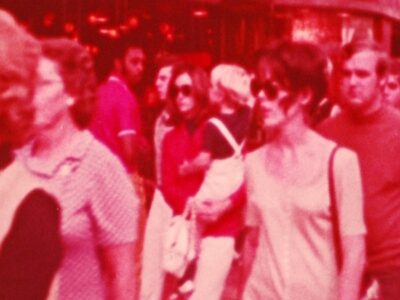
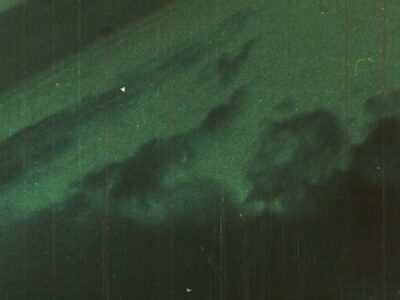
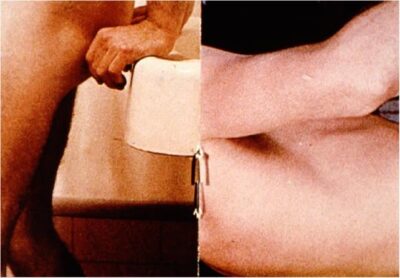


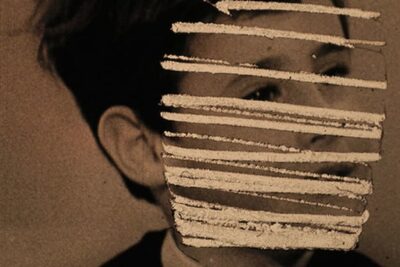





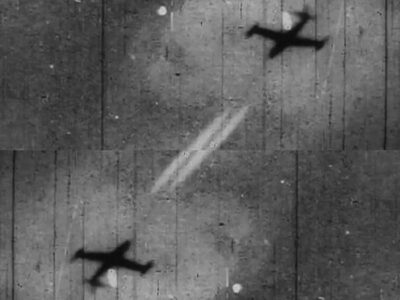
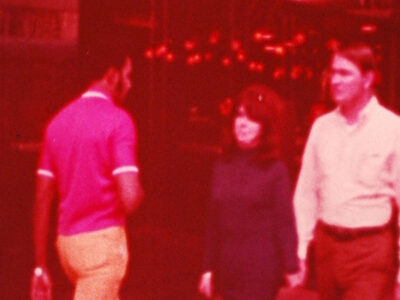
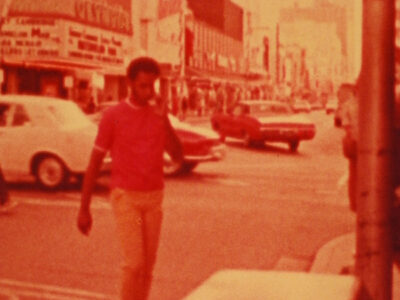


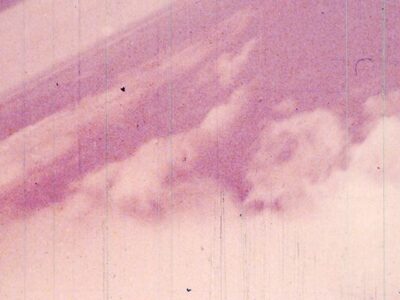
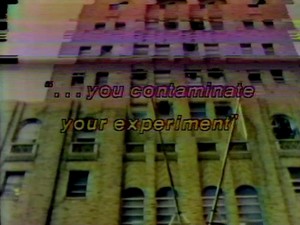
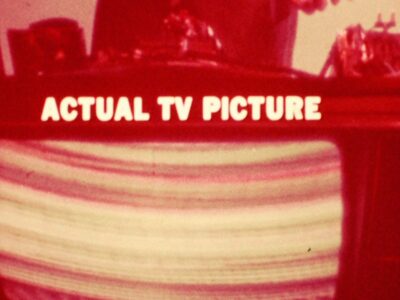
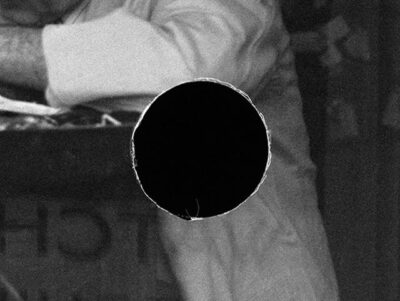
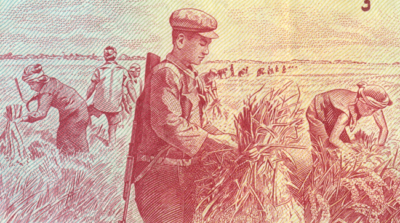
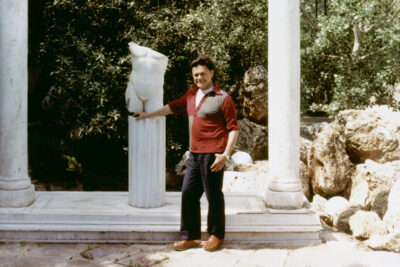
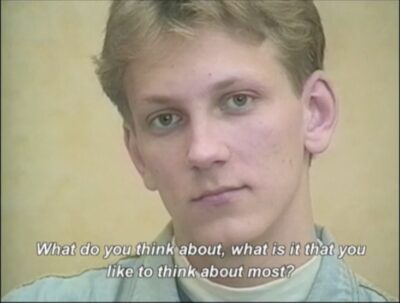
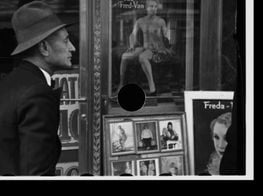
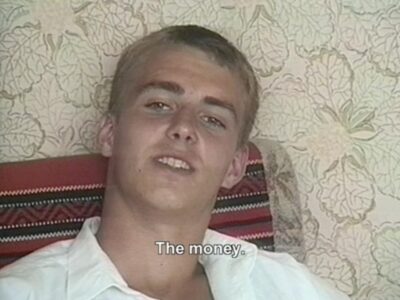

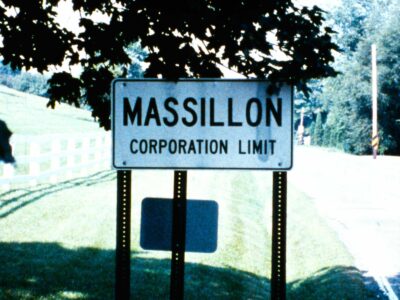
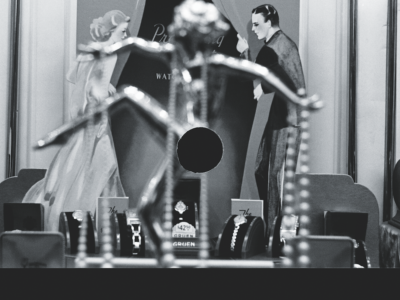
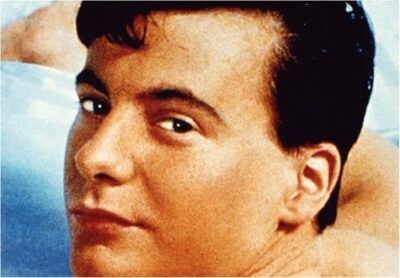
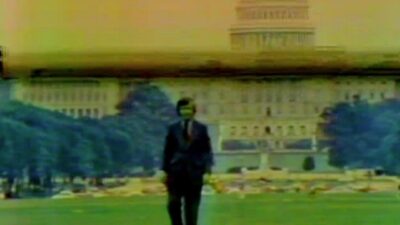


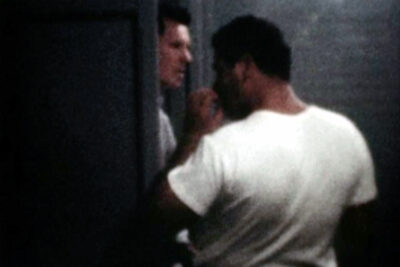
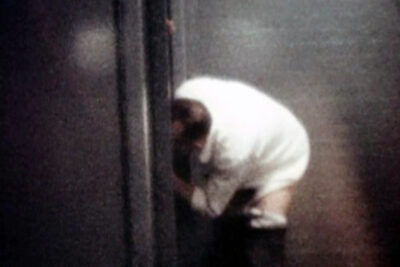











____
Further
William E. Jones @ David Kordansky Gallery
Sexuality as a Utopian Promise
WEJ on Luther Price
william.e.jones @ instagram
WEJ@ IMDb
ONE GREAT READER, SERIES 2, NO. 5: WILLIAM E. JONES
WEJ @ goodreads
VERN BLOSUM, PHANTOM
An Invocation of Ghosts: William E. Jones’s “Killed”
WEJ @ MUBI
Enterprise Square USA: A capitalist hallucination
William E. Jones, by Stuart Comer
William E. Jones Pleas for More Translations of Yayoi Kusama’s Writing
WEJ @ Letterboxd
Top 10 – William E. Jones
UNCONSUMMATED
William E. Jones: Urgency and Impermanence
William E. Jones: Punctured
THOSE FRAGMENTS MADE ME FALL ASLEEP: WILLIAM E. JONES’ “FALL INTO RUIN”
Towards Law as an Artistic Medium: William E. Jones’s Tearoom
Halsted Plays Himself by William E. Jones
____
Extras
Interview with William E. Jones
William E. Jones – CRUISING THE PUBLIC DOMAIN (Italian)
William E. Jones in conversation — May 18th, 2019
____
Interview
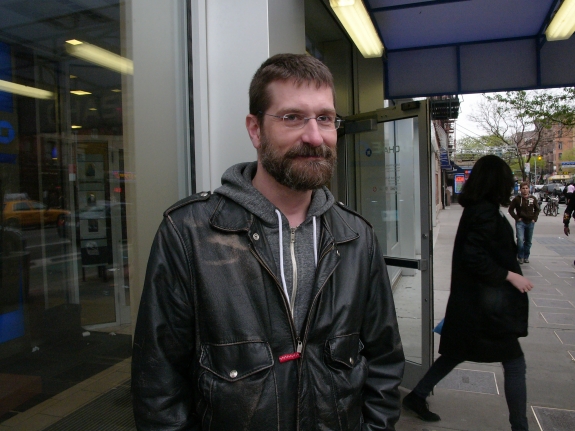
LUIGI FASSI To approach your work, it’s useful to talk about your professional activities and your background. I know you are an art professor in Los Angeles, and you’re also involved in the gay adult industry. Is that right?
WILLIAM E. JONES I teach in various art schools in Southern California. Until recently, I also worked for Larry Flynt, producing a line of DVD compilations of material in the archives. Through various acquisitions, Flynt now has a library of approximately 750 gay porn titles produced from 1970 to 1999. My job was to make bargain DVDs (four hours for ten dollars) composed of scenes from these old movies. Now that many people get access to porn via the internet, the appeal of such DVDs is limited. When the line of DVDs I produced was no longer profitable, it was discontinued, and I was laid off.
LUIGI What interests me most in your work is the way in which it deals with desire. In many of your works, the dynamics of desire are inextricably interwoven with the awareness of social control and repression. It’s a sort of dialectical contrast that makes your art very intriguing, bringing together romanticism and struggle, nostalgia and subversion.
WILLIAM E. A work that invokes desire without acknowledging some wider context may be pleasant and digestible, but it doesn’t particularly interest me. Sexuality can be an agent of social control, as anyone can see by turning on a television. But it also has a utopian promise, something that cannot (yet) be reduced to a coercive formula, an enforced cheerfulness, a new style of conformity. The pursuit of sex allows people of different social and economic groups to mix. I suppose what I say is tinged with a nostalgia for homosexuality’s former outlaw status, at least in the capitalist West. Is it possible for people to be free as sexual beings, rather than resigning themselves to being ‘good citizens’ acquiring partners, real estate, children, etc.? Perhaps a satisfactory answer to that question is one of the things I am looking for when I make my work.
LUIGI So you look back on homosexuality’s former outlaw status in the US as a time when paradoxically, sex was still able to create a space for resistance and individual/collective agency? That sounds really interesting, because it poses the question of whether homosexuality could and still can be analyzed as a cultural niche able to resist or even disrupt the power of capitalism and the commodification of personal relations.
WILLIAM E. This is a difficult question to endorse fully, because I have always believed in the struggle for gay rights, and I don’t wish to take back any of the advances of the movement. To situate my answer within the realm of contemporary American politics, I think that the recent legal maneuvering around the issue of marriage has had the effect of silencing much dissent among queer people. We did not bring the marriage question to the discussion; it was imposed upon us by our adversaries. The political strategy meetings where ‘gay leaders’ replaced universal health care with marriage equality as the main goal of the American gay rights movement were a catastrophe from which we will not recover for a long time.
LUIGI Sexuality becomes a tool of political and social critique in all your work, as in The Fall of Communism as Seen in Gay Pornography, which shows the brutal exploitation of young men in the porn industry run with Western money after 1989 in Budapest, Prague and Moscow. Can you tell me more about how you look at the relationship between sexuality and politics?
WILLIAM E. In the Socialist East, political power was not dependent upon money at all, though one did get material rewards for loyalty to the party. In America, where our recently elected president raised nearly a billion dollars in campaign funds, everyone with the slightest degree of political awareness knows that money and political power are connected. The young men who appeared in post-1989 Eastern European porn were just figuring this out, and clearly would do almost anything for money. What kind of power could they exert in this context? They had only their bodies, their availability as sex objects, to use.
LUIGI Your most intense work to me is Tearoom, shown this year at the Whitney Biennial. Together with Mansfield 1962, it’s very raw footage, encompassing all the themes that run through your work and highlighting strategies of social control. Can you tell me how the work came to be and how you got interested in the whole story?
WILLIAM E. The historical circumstances of Tearoom were not especially well known, but they had a personal importance for me. I was born in 1962, during the period between the arrests in the case and the first appearance of the suspects in court. Mansfield, Ohio is an hour’s drive away from my hometown of Massillon. While I was growing up, no one ever talked about the dozens of men convicted of sodomy or the tactics used to round them up. I knew nothing at all about the cases until I happened to find a film about them on the Internet. Some years ago I found a police instructional film called Camera Surveillance. It made use of amazing surveillance footage of men having sex in a public rest room. This film inspired me to do a substantial amount of research and was the basis of my video Mansfield 1962. Later, a friend gave me the email address of someone he thought would know about the original police surveillance footage. This man, the filmmaker Bret Wood, told me that a former Mansfield Chief of Police had been keeping the footage in his garage for many years. When Wood asked about it, he simply handed it to him. Wood very generously allowed me to use this footage. My first viewing of the tape was one of the most intense experiences I have had as a spectator. I then attempted to make various interventions in the material, but none of them ‘improved’ it in any way. I ultimately decided not to modify it. Tearoom is essentially a found object, partly because I wanted to retain the sense of awe I had when I saw the footage for the first time. My lack of intervention also makes a great multiplicity of readings possible. A central paradox of Tearoom: it is strictly ‘factual’ and was made with very specific intentions, and yet it is mysterious.
LUIGI In All Male Mash Up, you present a montage of hundreds of hours of gay porn movies from the Sixties on, focusing on marginalia, such as urban landscapes and dialog scenes, without featuring any sex scenes. The characters range from bikers, to swimmers, to cops, transmitting an unexpected, fascinating image of the American social history over the last forty years. Nostalgia and loneliness appear to be the main ingredients in these documents. What do you think makes these forgotten materials so effective, seen after a few decades?
WILLIAM E. The people who best remember these movies and the milieu they record often fail to see the interest in All Male Mash Up. The work has a much more powerful effect on people who were not even born when some of these scenes were shot. This leads me to conclude that nostalgia is almost entirely synthetic. I suppose Roland Barthes said something like this (far better) decades ago, but I slowly come to my conclusions in my own way. The clone generation that features prominently in All Male Mash Up became the most independent group of urban men in American history. They had sufficient access to money, space and friendly social networks to be lone sexual beings, amusing themselves when they chose with sex, drugs and disco. Though they were the pioneers of Western hyper-consumerism, the presence of so many single gay men pursuing frankly sexual interests threatened conservative notions of the nuclear family, the model unit of capitalist society. As we all know, AIDS brought this glamorous social experiment to an abrupt halt. Men who had lived by and for themselves suddenly had to be cared for; non-stop celebration became non-stop mourning.
LUIGI The ambiguity of nostalgia as a synthetic feeling is really an interesting issue in your work. You seem to create an epistemological shift in the relationship between reality and fiction, opening up a new, unexpected dimension of meaning.
WILLIAM E. What interests me in the material I use—and this holds true for any fiction film—is what I call a ‘documentary effect’. As years pass, fashions, urban landscapes and social forms all change, and the intense interest of spectators begins to break down. Instead of paying attention to the heroine about to be rescued from the top of a building, we notice that the building itself no longer exists in our world. The fiction film eventually becomes a documentary of its own making, a collection of images of dead people miming obsolete social mores in spaces no longer extant. At that point, which could be called the point of diegetic failure, a film can become another object entirely, one superior to the object intended by its makers. Films take on a whole new life and become available to our imaginations in exciting new ways. Porn films, which are generally understood as purely functional, can achieve a radical new status after many years. They no longer hold much commercial appeal, but to those looking for traces of the gay life of the past, even in highly contrived forms, they are a treasure trove.
LUIGI What do you think of the art scene in Los Angeles right now?
WILLIAM E. Los Angeles’s art scene has been formed by a number of different, contradictory forces. The presence of the entertainment industry reinforces a kind of conservatism, one perhaps with a narcissistic edge. The lack of significant local support for artists compels us to travel constantly, so the provincialism that once plagued Los Angeles art can hardly be said to exist anymore. Many are now speculating about the effects of the recent ‘correction’ in the art market. Optimists look forward to smarter and more adventurous art from Los Angeles. Pessimists expect a retrenchment, a reiteration of this city’s near-compulsory embrace of traditional painting. My own personal position in all this is fairly simple: I produced work on an extreme economy of means before the crash, and I will continue to do so in the foreseeable future.
_____________
Most of William E. Jones’s films and videos
_____________
The Fall of Communism as Seen in Gay Pornography, 1988
‘Every image in The Fall of Communism as Seen in Gay Pornography comes from gay adult videos produced in Eastern Europe since the introduction of capitalism. The video provides a glimpse of young men responding to the pressures of an unfamiliar world, one in which money, power and sex are now connected.’ — WEJ
Excerpt
Excerpt
Excerpt
_____________
Massillon, 1991
‘The filmmaker returns to his hometown to construct an unconventional and moving autobiography. Challenging some of the most firmly entrenched notions of filmmaking, Massillon tells its story without a single human actor, by combining beautiful images with a seductive voice-over narration.’ — WEJ
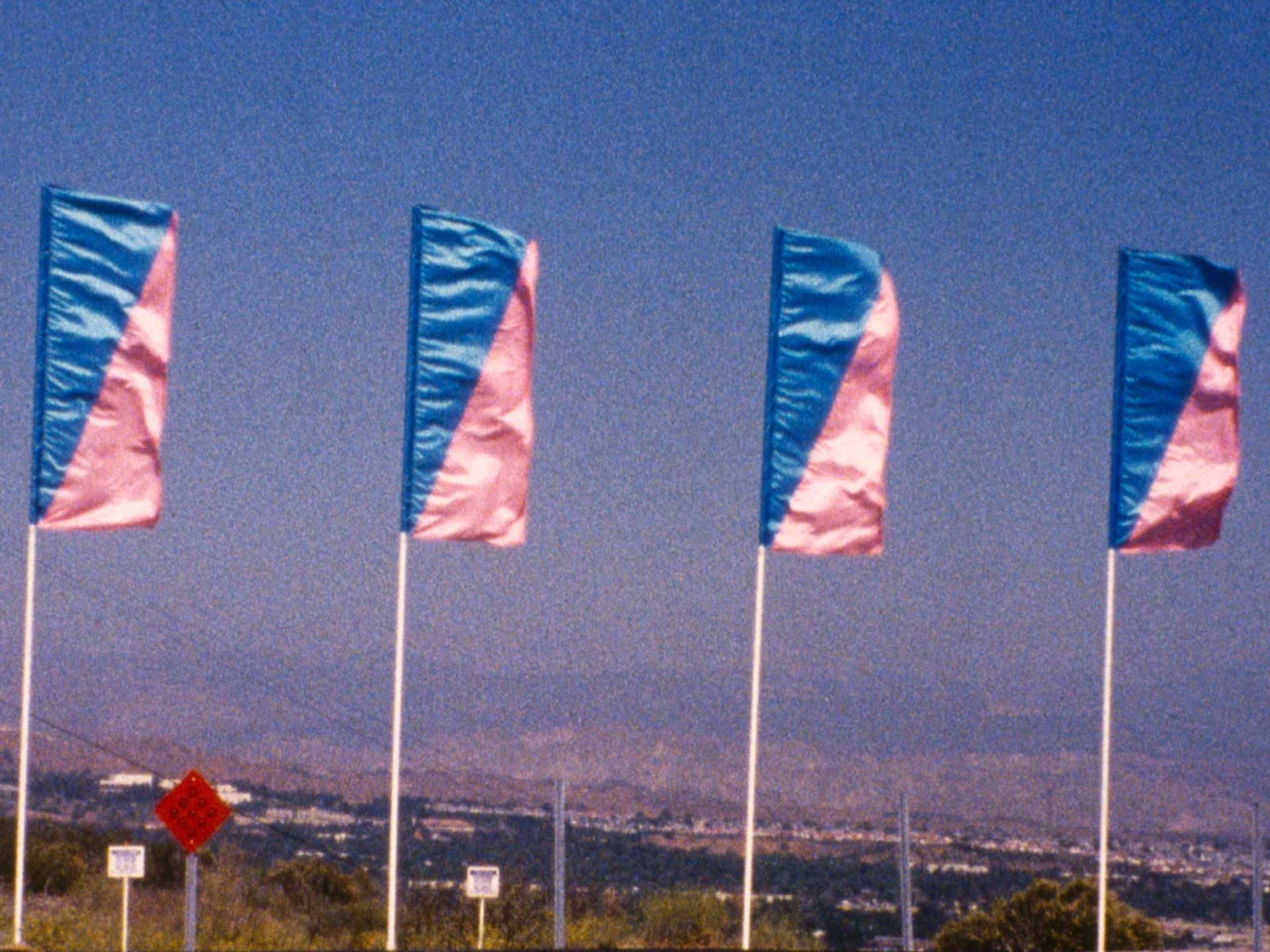
____________
Finished, 1997
‘In this essay film, the narrator describes how his fixation on a gay pornographic model from a phone sex advertisement leads to a new project, an elegy for a complex, troubled man named Alain Lebeau.’ — upstuffkino
the entirety
_____________
Is It Really So Strange?, 2005
‘Is It Really So Strange? investigates the cult of singer Morrissey which has developed in Los Angeles: William E. Jones interviews contemporary fans of The Smiths and Morrissey and immersed himself in fan nights, concerts and hair grease to record what he found to be a complex world: Theres a new brand of Morrissey fan among the Latinos and Hispanics of Los Angeles fans, gay and straight, discuss what Morrissey and his music mean to them. Based mostly in the eastern suburbs of the city, this unexpected cultural development has seen the growth of Morrissey-themed club nights, the rise of the jet-black quiff and even supports its own Mexican-fronted Smiths tribute act, the Sweet and Tender Hooligans. Is It Really So Strange? allows the fans themselves to speak at length about their lives, their loves, and their brief encounters with their idol. They show their bedroom shrines, talk about the nostalgic fashion of the scene, and reveal the private passions that compelled them to worship this working class Irish boy from Manchester who became a great pop star, then moved to Los Angeles.’ — Viennale
Trailer
__________
Killed, 2009
‘In William E. Jones’s silent video “Killed” (2009), a two-minute sequence of 130 appropriated black-and- white stills replays six times in rapid-fire progression on a continuous loop. Each still is a Farm Security Administration (FSA) documentary photograph, taken between 1935 and 1939. What distinguishes these photographs from others of the renowned U.S. government-funded photography project is that the negative for each was hole-punched, signifying rejection by the agency’s head. The resulting puncture, which rendered the negative unprintable as a seamless document, features prominently in the piece as both a mesmerizing graphic element and as an invocation of the ghosts of social documentary photography. With “Killed,” Jones elicits a reconsideration of documentary photography as an agency of social awareness and as an art–not in the interest of reviving it in the literal sense, but out of regard for the type of attention to the social landscape exemplified by the genre.’ — x-tra
Excerpt
____________
Punctured, 2010
‘There might never be a more bountiful kingdom of photography than that established under the auspices of the Farm Security Administration and ruled by the former economist Roy Stryker, some 171,000 negatives made to document Depression America between 1935 and 1942. Though he was no photographer (Gordon Parks joked that he couldn’t even load a camera), Stryker pulled no punches during his reign. “I never took a picture,” he once wrote, “and yet I felt a part of every picture taken. I sat in my office in Washington and yet I went into every home in America. I was both the Stabilizer and the Exciter.”
‘In his video “Punctured,” a reformatted version of his 2009 film “Killed,” the LA-based artist William E. Jones has performed a sort of perverse resurrection of Stryker’s perforated negatives, a Lazurus act that’s doubly miraculous because it uses the powers of video animation to raise up the quite-dead world of documentary photography. From 100 perforated images he located in the Library of Congress archives, Jones has produced 4,500 digital files at different scales of enhancement and organized these into a hypnotically syncopated, nearly five-minute-long looped movie. The structural logic is provided by Stryker’s hole itself: each of the hundred images appears for a total of around three seconds, beginning with an enlarged, screen-filling close-up of the negative space of Stryker’s hole, a giant black spot that then smoothly and very rapidly appears to recede in size as the surrounding photograph comes into view. Then, bang, another Stryker reject appears, with the same fast zoom-out, from hole to whole.’ — Eric Banks
the entirety
_____________
Spatial Disorientation, 2010
‘The original footage of Spatial Disorientation is a flight test seen from the cockpit of a U. S. Air Force plane. The material has been edited into a loop that repeats in variations: magenta and green, with motion blurs applied to each individual frame, some blurs parallel to the horizon line in the shot, and others perpendicular to it. The result is a visually complex movie with stroboscopic sequences that are a challenge to the eye.’ — WEJ
the entirety
_____________
Industry, 2011
sequence of digital files, black and white, silent
the entirety
_____________
Inanimate, 2011
sequence of digital files, black and white, silent
the entirety
_____________
The Soviet Army Prepares for Action in Afghanistan, 2011
‘The Soviet Army Prepares for Action in Afghanistan is derived from four shots of a Soviet film called Heirs of Victory (1975) which commemorates the Allied triumph over fascism in World War II. The original film celebrates the military might of the USSR in images of explosions and armed men leaping through flames. These images are subjected to such thorough manipulation that they become patterns flickering like a multitude of abstract paintings, with digital smears standing in for squeegee marks and brush strokes. Slowly the shots become less abstract until they are completely recognizable, though still somehow rather surreal.’ — moviefone
the entirety
_____________
Shoot Don’t Shoot, 2012
‘SHOOT DON’T SHOOT adapts a law enforcement instructional film that trains officers to decide by instinct whether or not to fire their guns. The suspect in this sequence fits the following description: “A black man wearing a pinkish shirt and yellow pants.”’ — Viennale
the entirety
_____________
Bay of Pigs, 2012
‘Bay of Pigs makes further use of documentary, albeit in a more abstract fashion, using a kaleidoscopic mirroring effect on clips from Cuban-made film Girón (1974), a film ‘captured’ by the CIA (and accessed by Jones in the CIA library) on account of its documentation of the 1961 Bay of Pigs Invasion from a Cuban point of view. Though Jones’s treatment of flying war planes crossing the skies effectively disorientates, playing on the misrecognition that takes place for the video’s owners, who see themselves depicted as the enemy, it is edited in such a way as to render the aeroplanes abstract, and an accompanying soundtrack of numerical codes exacerbates this almost mathematical, patternlike treatment of violence.’ — Art Review
the entirety
_____________
Model Workers, 2014
‘Model Workers presents a collection of paper money bearing images of workers. Intricately engraved details are arranged in chronological order; full views of the banknotes are in reverse chronological order, ending at the beginning: Mexico, 1914. The montage includes colonies and the independent countries they became, as well as former and present socialist states. Workers from Africa, the Americas, Asia, and Europe are represented.’ — WEJ
Excerpt
_____________
Psychic Driving, 2014
‘In William E. Jones’ Psychic Driving, a 1979 television broadcast, in which the wife of a Canadian M.P. details her horrific ordeal during CIA-backed mind-control experiments, disintegrates into a psychedelic miasma of scan lines and video interference.’ — Letterboxd
the entirety
_____________
Fall Into Ruin, 2017
‘Fall into Ruin tells the story of artist William E. Jones’s relationship with Alexander Iolas (1907-1987), a Greek art dealer from Alexandria active in New York and European cities from the mid-1950s to the mid-1980s. Iolas had close connections to the Surrealists, to artists associated with Nouveau Réalisme, and to American artists such as Ed Ruscha, Harold Stevenson, and Paul Thek. At the height of his career, he maintained galleries in New York, Paris, Madrid, Geneva, Milan, and Athens.’ — WEJ
Excerpt
_______________
Discrepancy, 2016
‘The soundtrack of Discrepancy, read by the computer voice “Alex,” is adapted from the film Traité de bave et d’éternité (1951) by Isidore Isou. The film is Isou’s manifesto of cinéma discrepant. The fundamental principle of “discrepant cinema” is a disregard of the image in order to privilege written narration. There is no attempt to illustrate the text. The relation of sound and image can—indeed, should—be as arbitrary and opaque as possible. Furthermore, the images are often “chiseled,” i.e., scratched, dirtied, splattered with ink and distressed beyond recognition. Isou engaged in a perverse iconoclasm in a medium conventionally understood to be primarily visual. In his manifesto, he argued that he did violence to the image in order to renew the film medium. He also asserted that “any novelist can make a film without spending a penny.” Discrepancy (2008–2017) follows Isou’s example and presents a wide variety of films, most of them found in the Library of Congress. These include films produced by the Democratic People’s Republic of Korea, Viet Nam, and China, confiscated by the US government, and now part of the CIA Film Library. There are also abstract films, erotic films, and television documentaries in this 12-screen version of Discrepancy, a project that can conceivably be produced in infinite variations, as long as new film footage can be found.’ — Yale Union
Excerpt
_______________
3000 Killed, 2017
‘3000 Killed consists of 2992 images, plus explanatory titles at the beginning and end, without zooms.’ — WEJ
the entirety
*
p.s. Hey. ** David, Hi. I broke one of my teeth eating a tortilla chip a few years ago. I thought ‘whatever’ but then it got fucked up and they had to pull the tooth out. So … Good week to you too, sir. ** _Black_Acrylic, Hey, Ben. First, belated very happy birthday!!!! Hm, ‘Censor’ does look quite intriguing. I’m on it. New Paul Morley book, awesome, and on such a rich subject! ** Dominik, Hi, D!!!! Well, I have to fill out this form proving I live here, meaning I have to gather a whole bunch of rent and utility bill receipts and stuff, etc., a big headache, but maybe just maybe this mess is at the end. Bickering family members, urgh, yeah, I know what that’s like very well, which is why I do everything possible to see mine one-on-one. I’ll happily take your love of yesterday, obviously. I’m no fool, ha ha. Thank you. PLEASE DO NOT CONTACT TODAY’S LOVE IF YOU DO NOT INTEND TO HAVE SEX WITH IT, G. ** Tosh Berman, I’ll for sure try to see the Wright film then. Oh, I really loved ‘The French Dispatch’. I thought pretty much everything about it was brilliant and dazzling and a total joy. It’s not his deepest film, but I thought that, in terms of the filmmaking, it’s him at the height of his powers. So, yeah, I adored it. ** Bzzt, Hey! I’m … fairly okay. You’re here! I’m around, let’s hang? I’m pretty free after Wednesday. What’s good? Do you have my email? Let’s make a plan. Great, have tons of French fun! ** Sypha, Hi. Yes, I obviously liked ‘Rocksong’ very much. See what you think. I don’t really know anything about the new ‘Matrix’ either, and I thought the two sequels were pretty hit and miss, but I’m very interested to see what the Wachowskis do with that material, and now that both of them have transitioned I’m even more curious about where they’ll be coming from. Fingers crossed. Well, Andrew’s book sounds intriguing on a plot level. How would you characterise his writing style? ** Brendan, Hi, B! No, I haven’t seen ‘The Card Counter’. I don’t think it has opened here yet, or else I missed it. I’ll find out. I’d rather see it in a cinema, but online will do. Yes, I got your email. I had the worst last week and half +, so I’m only just starting to catch up on things. Thanks, my pal, I’m excited to see the images! Love, me. ** David Ehrenstein, I don’t get drunk anymore, and I’m not a big beach fan, but the moon’s cool. ** Bill, Hi. The Tax Board and I are making progress, and that’s the best I can hope for, it seems. So, we’ll see. I think maybe Hetero_Slave is just a little too tan to be Chalamet, although I haven’t seen ‘Dune’. Seems like he might be tanned in that. I loved ‘The French Dispatch’. What a total pleasure. Just what I needed. ** T, Hi. Yeah, that is tricky: the balancing act between one’s cold face and warm humid body. But good tricky. Oh, maybe if you catch me today, we could meet up today. Tomorrow’s kind of busy. Or else the weekend if nothing else, yes, that’ll work. Your riff/mutation of Fun?fun!’s schpiel is a good idea. What to do with it. Hm … Ha ha, that would quite a day, and I’ll … try, god willing. I hope every Paris store you enter today offers you a free trampoline with gratis delivery. ** Steve Erickson, I envied that sentence. I am less frantic. And very slightly in less trouble. Baby steps = welcome. Everyone, Here’s Steve’s November review roundup with Lotic, Oscar and the Wolf, and Cakes da Killa. Good luck with the booster. We’re required to get one here, otherwise our vax pass will become invalid, and mine’s next month. ** l@rst, Hi, L. The Lim is a goodie. Is ‘Action Kylie’ extremely out of print? I only have my copy, and I’m hanging onto it. Hm. Best of luck. It’s a super swell book, duh. I loved ‘The French Dispatch’ too. I honestly don’t see why one wouldn’t love it, but that’s love for you. Post office, yes. There are two packages waiting for me downstairs at the concierge’s office today, so maybe I’ll get lucky re: yours. ** Right. If you haven’t known the fine and rangy films and videos of Mr. Willian E. Jones, you do now, or, rather, you have a golden opportunity. See you tomorrow.




 Now available in North America
Now available in North America 
This is a great post! nice to see Morrissey amongst the throng… WILLIAM E. JONES looks like a brilliant cool guy…. As well as seeing the real thing I’ve also seen a few tribute bands… Mexrrissey the Mexican tribute band were brill…. I loved their version of ‘How soon is now?’ it was haunting…
yep the tooth… did you leave yours under the pillow.?…. see the trouble is I swallowed mine… so you can imagine… the tooth fairy turning up and being like… “erm??? and having to go at me with a knife at my belly… while I scream in the manner of Penelope Pitstop “hay-elp!! hay-elp!!!” then leaving a tip to say thanks hopefully… or perhaps it might simply wait and sift through my shit…. and it was only part of a tooth so I wonder how much I might get…. I feel a poem coming on… maybe a rip off of something you have already said but in my own style…. Jeez… I see a gondola slutting along a root canal or the Denial river… The pain I felt earlier this year was off the scale with my gums…. the pain Den…. the pain!!!!! fuk! no pain this time though you will be very very pleased to hear!!!
So I’m seeing Soft cell this evening down the road…. I’ve already checked the setlist so I know what’s coming….
I can’t imagine all the stress you must be going through… would you like me to show my teeth for you Den… at them??? like a wolf???? best I can do is wait till I’ve taken a shit and see if that broken bit is there this morning otherwise I might get in trouble… xxx
@ David, you’re a lucky man seeing Soft Cell tonight! I had wanted to check the Leeds gig on Saturday but was scared off by Covid. All the reports say they have been stunning.
They were fantastic!! loved every minute of it! I was four rows from the front! you should go and see them!
After Wednesday works for me too, maybe sometime this weekend? I don’t have your email, what is it?
Today I’m going back to the 12th and I’m still kinda taking it easy. I saw a French film last night at a movie theater on the Seine. There’s an arthouse cinema I want to check out too. New York is wearing me out, I really needed this vacation……..Looking forward to meeting!
Yeah, that’s pretty much how I felt about FRENCH DISPATCH. I wouldn’t put it on the same level as some of his other films like GRAND BUDAPEST HOTEL or ROYAL TENENBAUMS (still my favorite) but it’s a nice enough way to pass two hours and it all looks very nice, is very well-written and acted, and so on. One review said it was him taking his stylistic tics and obsessions to the outer limit of possibility, which I think summed it up pretty well…
I think only one of the Wachowskis is doing this Matrix though, the other one isn’t involved! The second Matrix was a bit bloated (and only really redeemed by its epic car chase scene and an interesting last act), but the 3rd film has grown on me over the years, which is funny because I strongly disliked it when I first saw it.
I guess I would call Andrew’s style kind of mainstream in tone, nothing too weird in terms of vocabulary (though he has gotten better at similes over the years). His main focus is on characters and story so he doesn’t care about style all that much. Well, I’m on page 60 now and have reached chapter 3 (the chapters have been pretty long in this one). The chapter I just finished was a flashback to the time the protagonist visited his estranged novelist father, only to find his father living with a weird young woman who could glow in the dark. Then his father showed his son a bridge he was building, that led to a place “between the worlds.” In this in-between place was a locked door, where the father says he entered once, and which led him to a dark world, where he ended up saving the glowing woman, whose people there were enslaved by others so far only known as the “masters.” Then the father dumps the glowing woman off on his son, claiming he has to keep building his bridge to see where it takes him (this all ties into one of my brother’s earlier books, where the novelist father and his bridge play a big part: as I said, they’re all connected).
Good to see this William Jones day, Dennis. I haven’t had much luck seeing his pieces, other than in short excerpts. I’ve caught bits of Fall of Communism… and Tearoom, would love to see the entire films. Will definitely check out Finished.
Found a couple Shu Lea Cheang films online. Fresh Kill is still great messy inventive fun, but I had some trouble with I.K.U.
Hope the Tax Board stuff gets worked out soon…
Bill
I love Bill’s books really a lot. He’s a remarkable writer. I have always wanted to see his visual works, but somehow missed them. Although I’m not a fan of The French Dispatch , I’m happy you’re into it. I wanted to love it, but I don’t for some reason. And I totally respect him as a person and artist. Right now I’m writing a screenplay so I may be hyper-sensitive to the film world.
Oh How I Love Bill Jones! His exploration of gay porn have a depth and complexity few have ever attempted.
I am especially fon of his “Imitation of Christ” project because I knew Patrickin his ater years when he was driving a ca in L.A. and as a result was happier than he had ever been.
Hi!!
Oh, shit… So, you have a few more rounds with this… Although, if it solves the situation in the end, I guess it could be worse, right? I really hope you can forget about this whole thing soon.
Wise. I can only say that’s wise. Seeing your family members one-on-one.
While walking my dog, I met a guy who lives nearby, and he happily informed me that he has Covid but doesn’t feel ill at all, he just can’t smell anything. Isn’t that lucky. He was fully serious. And I mean… I’m not actually freaked out about this crap too easily, but I was absolutely taken aback by his complete, naïve stupidity and irresponsibility. (I guess I don’t need to mention that he wasn’t wearing a mask or anything.)
Hahaha, I can’t say I wasn’t warned! I’ll… contact love. Thank you! (And thank you for today’s post too! I’m only gonna dive into it after this little letter, but I can already tell that it’s something I’ll love.) Love seeing a therapist who never says anything straightforward, only stuff like “When you open up about what happened to you in the army of me did not escape the fact that you are not experienced, not only of hatred and resentment, even at that doctor”, Od.
IS IT REALLY SO STRANGE? and the porn found footage feature are great. He’s a sharp writer as well. His comments about the emotional rollercoaster ride of filmmaking are on target – it amazes me that Francis Ford Coppola made one of the most popular and acclaimed films in American history but had to self-finance his last film with the profits from his winery.
After last night’s booster, I had serious pain in my arm, leading to insomnia. The arm is still very sore, but it feels better today.
I started the new Karl Ove Knausgaard novel today. I really enjoyed MY STRUGGLE when I began reading it, but after the first two volumes it started to seem far too narcissistic (and Knausgaard’s writing talent, rather than the events of his life, is the most interesting thing about him.) 100 pages in, this one seems like a stab at a literary horror novel – lots of portent amid scenes of everyday life. Have you read him?
I’m sorry you’ve had a shit time. I think we’re all dealing with that in our own ways. Every day is struggle. The work will be there for you when you are ready. I hope the future is looking up. I’m going to Las Vegas for a few days next week to be dumb and not feel bad about it. Love B.
Hi Dennis. How’s everything? I met William E. Jones a number of times when I lived in Los Angeles. He’s friends with Jarett Kobek and attended the premiere of one of me and Jarett’s video collaborations. Jarett has also published a few of Bill’s books, which are also terrific.
One of my last pre-pandemic memories was sitting in on one of Bill’s classes at ArtCenter, where he was teaching a course on Warhol’s films. He had access to super rare stuff from the Warhol Foundation that’s only available on 16mm, and he invited me to attend the screenings. I got to see the film “Mrs. Warhol” with Bill, Jarett, and a room full of bored college students, but then two weeks later all of Los Angeles went into lockdown. That may have been the last real social event I attended before isolating for months and eventually moving to the Midwest… Anyway, that’s my random Bill Jones anecdote!
If you find yourself with seven minutes to spare, here’s a video of Victor DeLorenzo (former drummer of the Violent Femmes) and his bandmate playing an improvised, drone-y piece of music with the musician I’m currently making a documentary about: https://vimeo.com/568006469
Hey, Dennis,
Brian here. Long time, no see (or rather write)–the lengthy weeks since I last wrote to you have been so dominated by schoolwork that I haven’t found the time to comment, although I have been diligently keeping up with the posts as always. The impulse to comment tonight arose both because of the simple desire to speak to you again and of the fact that I’m on something of a Bresson kick this week, and watching Bresson’s films always makes me think of your work, of course. In addition to “The Devil Probably” I’ve now seen “Au Hasard Balthazar” and, tonight, “Lancelot du Lac”, this last of which is probably my very favorite of the three I’ve yet seen. Sound design can really be a marvel in the right hands, no? A brief chat with my film professor this evening suggests I might even be doing some independent research on his work in the near future, which is exciting. Anyway, the whole situation had me wanting to talk to you, so here I am.
A fortuitous post to be commenting on, too. I’ve been circling around and adjacent to Jones work for a while now, although I haven’t yet read any of his novels. I did see “The Fall of Communism As Seen in Gay Pornography” a while back, which is of course really special, and helped me better grasp your comments about the haunting nature of Russian twink pornography. He’s been in the conversation a lot lately because of the new Fred Halsted BluRay release, which he contributed quite substantially to, and his new novel. This post is a great resource for the rest of his movies, some of which (“Finished” especially) I have been meaning to watch for a long time.
I hope this finds you well in every way. How have you been? Up to anything interesting? I have to agree with you about “The French Dispatch”: formally speaking, it’s got to be his most totalized movie, which is always cool to see. Neck and neck with “Annette” and “Titane” (which, while flawed, I personally quite enjoyed) for my favorite of the year. Although there’s plenty more I still need to see. Okay, turning in now. May the middle of the week greet you with grace and diversion.